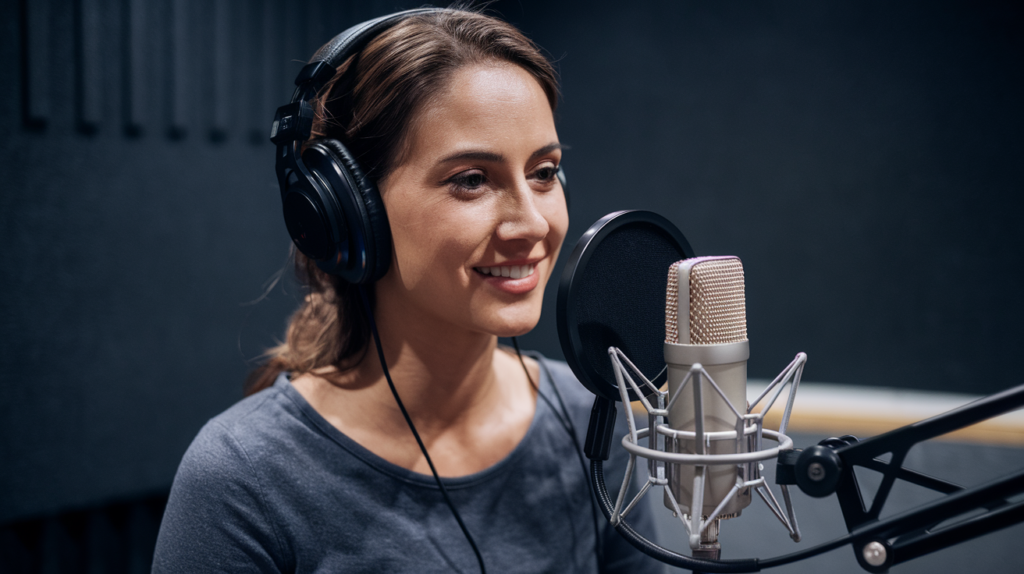Key Takeaways
- Regional Diversity: The Romanian language exhibits significant regional diversity, with distinct dialects reflecting the history and culture of their speakers across Romania and neighboring areas.
- Key Dialects: Major dialects include the melodic Transylvanian, the unique Moldovan with its historical vocabulary influences, and Wallachian known for its urban slang and practical communication styles.
- Phonetic Variations: Regional accents vary notably; geographical factors influence phonetics, preserving certain sounds in isolated areas while blending traits near borders.
- Lexical Richness: Each region contributes unique vocabulary shaped by local customs, history, and influences from other languages such as Hungarian, German, French, and Slavic tongues.
- Grammatical Differences: Grammatical variations manifest in syntax and morphology across dialects. For example, Transylvanian speech tends to be more flexible than that of other regions like Wallachia or Moldova.
- Cultural Influences: Historical interactions among communities have profoundly impacted regional dialects. Minority languages also enrich Romanian by integrating new words and expressions into local speech patterns.
Ever wondered how the Romanian language varies across different regions? You’re not alone! The rich tapestry of regional diversity in Romanian isn’t just fascinating; it also reflects the history and culture of its speakers. From the melodic accents of Transylvania to the distinct dialects found in Moldova, each area has its unique flavor that shapes communication.
Overview of Romanian Language Regional Diversity
Romanian showcases rich regional diversity, reflecting the history and culture of its speakers. Various dialects exist across Romania and neighboring areas, each with unique characteristics.
Key Dialects
- Transylvanian Dialect
- Transylvania’s melodic accents stand out among other regions.
- Influences from Hungarian and German add distinct flavors to this dialect.
- Moldovan Dialect
- The Moldovan variant displays notable differences in vocabulary and pronunciation.
- Local expressions often stem from historical ties to both Romania and Moldova.
- Wallachian Dialect
- Wallachia features a broader range of slang terms commonly used in everyday conversations.
- This dialect emphasizes practical communication styles typical of urban settings.
Historical Context
Understanding these variations requires recognizing their historical contexts. Centuries of migration, trade, and cultural exchange shaped how speakers communicate today. Each region’s linguistic evolution mirrors its societal changes over time.
Cultural Reflections
Regional diversity doesn’t just affect speech; it also influences cultural identity. You can see how local traditions and customs intertwine with language use, creating a vibrant tapestry that defines what it means to be Romanian in different areas.
Each variation provides insights into the people behind the words, making the exploration of Romanian regional diversity an enriching experience for anyone interested in language or culture.
Phonetic Variations
Phonetic variations in the Romanian language showcase the richness of its regional dialects. These differences not only highlight unique cultural aspects but also influence communication styles across various areas.
Regional Accents and Dialects
Romanian features distinct regional accents and dialects, each with its own phonetic characteristics. For instance, in Transylvania, you’ll notice a melodic accent influenced by Hungarian and German linguistic elements. The Moldovan dialect stands out with unique vocabulary and pronunciation that can differ significantly from standard Romanian. Wallachian dialect tends to incorporate more slang, reflecting urban influences on everyday communication. Such diversity enriches interactions among speakers, making conversations more vibrant.
Influence of Geography on Phonetics
Geographical factors play a crucial role in shaping phonetic variations within Romanian. Areas nestled in mountains may preserve certain sounds or pronunciations that are less common elsewhere due to isolation from major urban centers. Conversely, regions near borders often adopt phonetic traits from neighboring languages, leading to a blend that’s both fascinating and complex. This geographical impact creates a tapestry of sounds that define the way people communicate depending on where they live.
Understanding these phonetic variations enhances your appreciation for the depth of the Romanian language and culture, offering insight into how identity is woven through local speech patterns.
Lexical Diversity
Lexical diversity in the Romanian language showcases a rich tapestry of regional expressions and vocabulary. Each region contributes unique words and phrases, reflecting local culture and history.
Unique Vocabulary Across Regions
Romanian speakers often use specific terms that vary significantly from one area to another. For example, Transylvanian speakers might employ words influenced by Hungarian or German origins. In contrast, those in Moldova utilize distinct terms shaped by historical connections to neighboring countries. This regional vocabulary not only enriches conversation but also provides insight into local customs and traditions.
Loanwords and Their Origins
Loanwords play a crucial role in enhancing Romanian lexical diversity. Many come from languages such as French, Italian, Hungarian, Turkish, and Slavic tongues due to centuries of cultural exchange. For instance, the term “restaurant” integrates French influence while “bucurie” (joy) carries roots from Slavic languages. These loanwords add depth to communication and illustrate how interconnected cultures shape language over time.
Understanding these aspects of lexical diversity enhances appreciation for the Romanian language’s richness. It reflects how history has woven itself into everyday speech across different regions, offering you a glimpse into the vibrant cultural identity of Romania.
Grammatical Variations
Grammatical variations in Romanian reflect the language’s regional diversity and influence communication styles. These differences manifest in syntax, morphology, and usage across various dialects.
Syntax Differences in Regional Speech
Syntax varies significantly among Romanian dialects. In Transylvania, for instance, you might notice a more flexible word order compared to Wallachian speech. This flexibility allows for emphasis on different parts of a sentence. In contrast, Moldovan speakers often adhere to stricter syntactical rules, making their speech clearer but sometimes less expressive. Such differences can affect not only how sentences are structured but also how meanings are conveyed within local contexts.
Distinctive Morphological Features
Morphological features also highlight grammatical diversity within the Romanian language. For example, certain verbs may take on unique conjugation patterns depending on the region. In Transylvania, specific past tense forms might be used more frequently than in other areas. Additionally, some regions employ distinct pronouns or diminutive forms that add nuance to everyday conversation. These morphological traits enrich the language and reflect cultural identity across Romania’s diverse communities.
Cultural Influences on Language
Cultural influences play a significant role in shaping the Romanian language’s regional variations. These influences stem from historical interactions among different communities, which have left a lasting impact on how language is spoken across Romania.
Historical Contexts Shaping Dialects
Historical events such as migration, trade, and political changes have molded dialects within the Romanian language. Transylvania’s dialect reflects centuries of Hungarian and German presence due to its diverse population. You might notice unique expressions or pronunciation that highlight this rich heritage. Similarly, Moldova’s dialect carries traces of Slavic languages influenced by its geographical proximity to Ukraine and Russia. These historical contexts not only enrich vocabulary but also contribute to the overall identity of each region.
The Role of Minority Languages
Minority languages significantly shape the Romanian linguistic landscape, introducing new words and expressions into local dialects. For instance, communities speaking Romani or Ukrainian often incorporate elements from their native tongues into everyday communication. This blending creates an intricate tapestry where various languages coexist with Romanian, enhancing cultural diversity. You can see how these minority languages foster connections among speakers while adding depth to regional identities within Romania’s broader linguistic framework.
Conclusion
Exploring the regional diversity of the Romanian language reveals a rich tapestry woven from history and culture. As you delve into its melodic accents and unique dialects you’ll uncover how local traditions shape communication styles across various regions. Each dialect offers a glimpse into distinct cultural identities influenced by historical connections, migrations, and exchanges.
Understanding these variations enhances your appreciation for the depth of the Romanian language. It highlights not just words but also the stories of communities that have contributed to this vibrant linguistic landscape. Embracing this diversity fosters a deeper connection to what it means to be part of Romania’s complex identity today.
Frequently Asked Questions
What are the main regional dialects of the Romanian language?
The main regional dialects of the Romanian language include Transylvanian, Moldovan, and Wallachian. Each dialect reflects unique historical influences and cultural characteristics. For example, the Transylvanian dialect is shaped by Hungarian and German influences, while Moldovan features distinct vocabulary due to its proximity to Slavic languages. Wallachian is known for its urban slang.
How do historical events influence Romanian dialects?
Historical events such as migration, trade, and political changes have significantly influenced Romanian dialects. Regions like Transylvania show traces of Hungarian and German heritage due to centuries of interaction, while Moldova’s dialect incorporates elements from neighboring Slavic languages. These factors create a rich linguistic landscape reflecting Romania’s diverse history.
What phonetic variations exist in the Romanian language?
Phonetic variations in Romanian manifest through distinct regional accents and speech patterns. The melodic accent in Transylvania contrasts with the more straightforward pronunciation found in other regions. Geographical isolation often preserves certain sounds in mountain areas, while border regions adopt traits from neighboring languages, enriching communication styles across Romania.
How does lexical diversity enhance the Romanian language?
Lexical diversity adds depth to the Romanian language by showcasing unique expressions specific to each region. Different terms arise from historical connections with other countries; for instance, Transylvanians often use words influenced by Hungarian or German. This variety highlights how cultural exchanges have enriched everyday vocabulary among speakers.
Are there grammatical differences between Romanian dialects?
Yes, grammatical differences exist among various Romanian dialects. For instance, Transylvanian speech tends to allow more flexible word order compared to Moldovan speech’s stricter syntax. This flexibility enables varied emphasis within sentences while showcasing distinctive verb conjugation patterns and pronoun usage that reflect each region’s cultural identity.
What role do minority languages play in shaping Romanian speech?
Minority languages significantly influence local varieties of Romanian by introducing new words and expressions into everyday communication. Communities speaking Romani or Ukrainian contribute elements from their native tongues into local dialects, fostering cultural diversity and enhancing connections among speakers within Romania’s broader linguistic framework.







